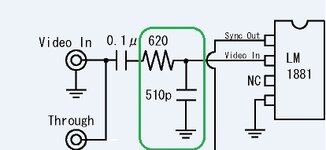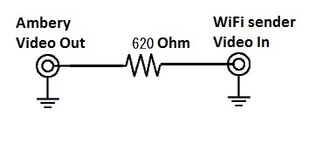Hi there!
I was not satisfied with VIDEO quality from Board Monitor and how WiFI video sender operated so finally I got time to implement improvements.
WiFi video sender is replaced with
EasyCap video capture device (6$ on AliExpress).
EasyCap viewer app from GooglePlay is used to display video on Android (4$). According to developers app works only with certain chips - utv007(HTV600). I was lucky - EasyCap I ordered came with right UTV007 chip. Make sure to enable NTSC mode in settings and place button to NTSC mode on Ambery converter.
The main challenge was to enable Host mode (USB on-the-go or OTG) on Tablet to make easy cap work. Only 4 wires are present in standard micro USB wire (Pins 1,2,3,5). For this purpose I created custom micro USB wire with all 5 pins soldered (including PIN 4 which is responsible for turning on Host mode).
Host mode (OTG) is enabled on Tablet by connecting PIN 4 to the PIN 5 (GND). After Host Mode is on - Tablet is powering device connected to it (PIN 1 provides +5V), pins 2, 3 are transferring data.
So in my setup one more wire (from micro USB, PIN 4) was passed in parallel with standard micro USB wire to the point of Ambery Video converter. I added button (BLUE one the left bottom corner on image below) in the panel (where AUX socket is located) to turn on Board Monitor video (powers Ambery video converter, powers relay) when required (to do Settings - set time/date, Balance Audio, see Track number etc.).
12V relay is added (to connect PIN4 with GND) to the same button to enable Host Mode on Tablet. In normal conditions Board Monitor button is turned off in my car to disable Host Mode on Tablet (otherwise EasyCap will drain battery as Phone powers it) and do not power Ambery video converter.
Standard wire bunch on EasyCap was removed and I soldered 2 wires directly to socket to get video in signal. I also removed USB male connector from EasyCap and soldered by wires USB female connector, so I can use USB male from tablet directly.
Result are fantastic:
1. Stable video from board monitor
2. Right Corner is not cut
3. Video from board monitor appears on Tablet in the moment I turn on Board Monitor button on panel near AUX socket, as EasyCap automatically starts app in the moment Host Mode is enabled and EasyCap device recognized. EasyCap closes automatically after hiost mode is disabled and EasyCap is unpowered (blue button tuned off).
More pictures (including screenshots and video will follow).
PS I managed to do adjustments (connecting new micro USB connector to Tablet and passing thru gray wire from PIN4) without removing board monitor, by opening up board monitor top cover in car. This saved a lot of time.
[youtube]2tQVCHr59vY[/youtube]




